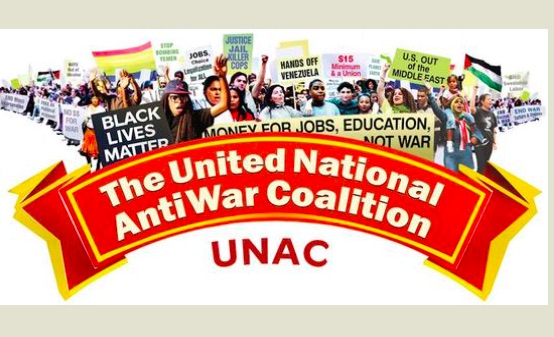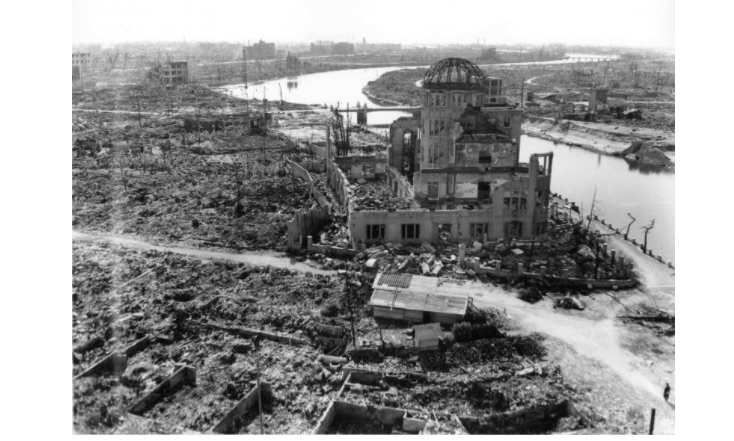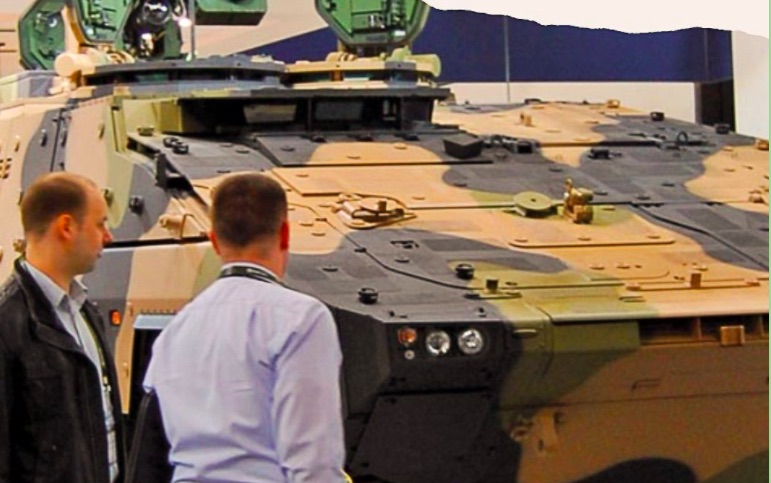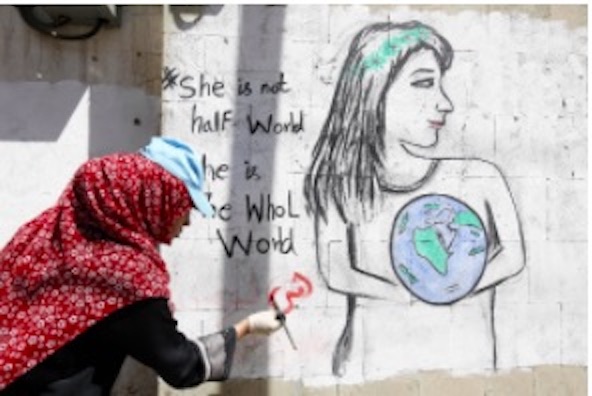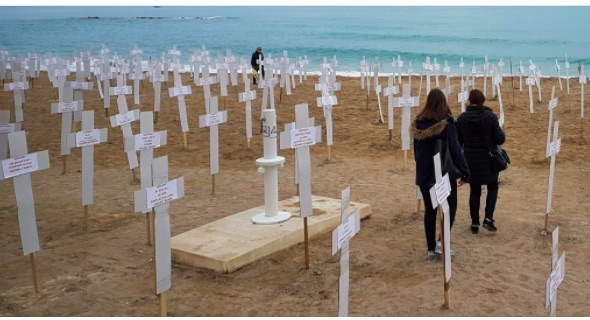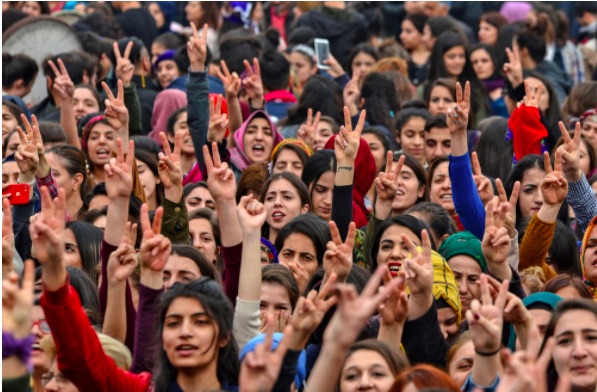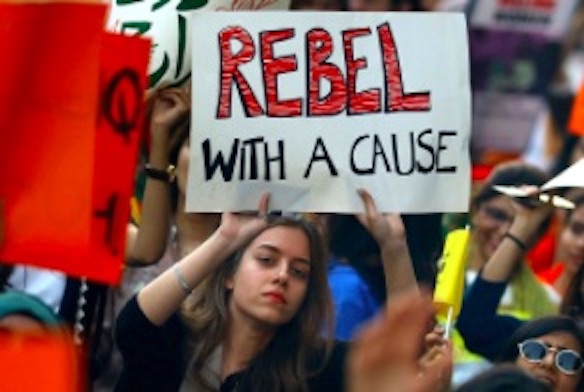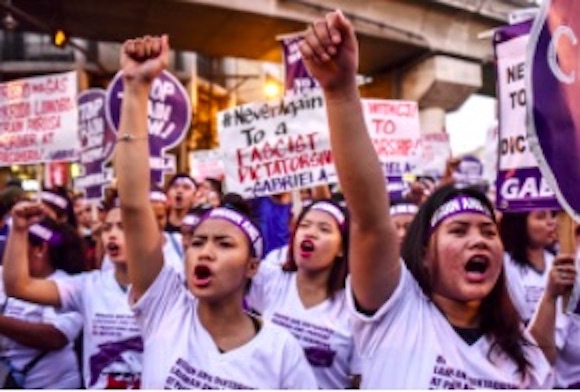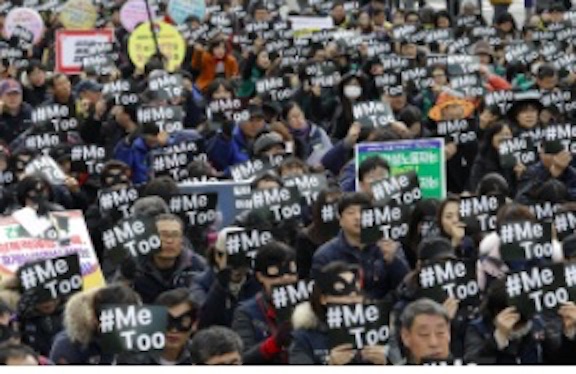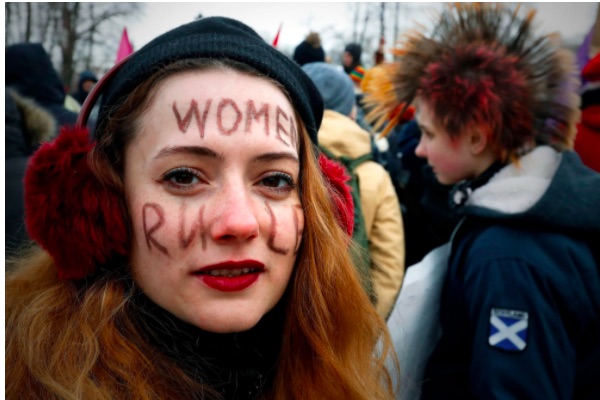FREE FLOW OF INFORMATION .
A survey by CPNN
We have found 33 events in 13 Asian and Pacific countries. They were listed in Google during the week of September 21-28 under the key words “International day of peace”, “Dia Internacional da Paz” and 国际和平日 (Chinese). Two come from the facebook page of International Cities of Peace and two came from the website of Campaign Nonviolence. No doubt there were many events listed on the Internet in languages other than those for which we searched.
In addition to these, there are about 125 events listed on the maps of One Day One Choir and Montessori schools singing for peace, but there is no indication which took place this year and which took place only in previous years.

Korea Peace Appeal
ANNA BAY, AUSTRALIA
Peace is Possible is commemorating the UN International Day of Peace 2020 and joining with Pace e Bene Campaign Nonviolence to provide access to the recorded online conference held on 8/8/20. A peace picnic will be held at Birubi Beach on Sunday 9/20/2020 from 4-6pm
BRISBANE, AUSTRALIA :
Video of event at the United Nations Association of Australia
CANBERRA, AUSTRALIA :
On the International Day of Peace, the United Nations Office in Canberra in partnership with the Rotary Club of Canberra Burley Griffin organized an event at the Canberra Rotary Peace Bell, Nara Peace Park on the shores of Lake Burley Griffin. The event commenced with the performance from the Chorus of Women, Canberra’s renowned Women’s Peace Chorus. The keynote speaker Tim Weeks spoke passionately about the importance of taking collective action to bring about peace and to support those fleeing conflict.
MELBOURNE, AUSTRALIA :
Victoria University International Peace Day forum live online with thought leaders and special guests on 21 September from 4pm to 5.30pm to explore notions of peace, marking the UN . The panelists are Mr Craig Foster, Amnesty International, Ms Mazita Marzuki, Consul General of Malaysia, Mr Charles Allen APM, Institute of Economics for Peace, Ms Rohini Kattadath, Immigration Museum, and Tom Clark, Victoria University
MINDEERUP, AUSTRALIA :
The piazza at Mindeerup will be lit up for several nights from Monday in recognition of the United Nations International Day of Peace.
ROCKINGHAM, AUSTRALIA :
The City of Rockingham has planted a gingko biloba tree at City Park to recognise International Peace Day 2020 and to commemorate 75 years since the atomic bombing of Hiroshima and Nagasaki in Japan. This is part of the Mayors for Peace program, which is an international organisation of cities from around the world dedicated to the promotion of peace.
BANGLADESH :
Bangladeshi youth organizer Sumon Rahman (Ruhit Sumon) received India’s International Day of Peace Award.. Ruhit Sumon, president of the Mayurpankhi and Mayurpankhi Family Social Welfare Organization for Children and Adolescents, received this international honor in recognition of his work in protecting world peace, health and human rights through social services at home and abroad. This prestigious award is given by the Mission Global Peace Association of India. Ruhit Sumon is conducting various activities in the epidemic corona situation through its established organization “Mayurpankhi”. Corona preventive and corrective training and workshops during the outbreak, coordination of volunteers, provision of masks, disinfectants, soap for the destitute, destitute and torn roots, distribution of awareness leaflets, distribution of food and iftar items, sewing machines for self-sufficiency and employment. In addition, food, financial assistance and protection materials were provided to flood victims.
RUSSIAN EMBASSY IN CAMBODIA :
On September 21, 2020, the Russian Embassy in Cambodia held a ceremonial assembly on the occasion of International Day of Peace. Head of the diplomatic mission, its personnel, as well as teachers and pupils of the Embassy School attended the event. Ambassador H.E. Mr. Anatoly Borovik delivered address, stressing the importance of peace in the world and need of joint efforts in its attainment and preservation.
BEIJING, CHINA :
To celebrate the International Day of Peace and to commemorate the 75th anniversary of the founding of the United Nations, the China World Peace Foundation, the Beijing International Peace Culture Foundation, the United Nations Educational, Scientific and Cultural Organization, and Beijing co-organized the seventh “Heyuan Peace Festival” in Beijing with the theme “Promoting Peaceful Dialogue, Civilized Health, and Youth Space”. The guests at the conference agreed that mankind is a community of shared destiny, sharing weal and woe. All countries should form a more inclusive global governance system, more effective multilateral mechanisms, and more active regional cooperation through peaceful public welfare, international exchanges, technological innovation, and cultural interaction.
NANJING, CHINA :
On September 21, UNESCO, the National Commission for UNESCO, the Information Office of the People’s Government of Jiangsu Province, and the People’s Government of Nanjing jointly hosted the “Youth in Action” 2020 International Peace Day event in Nanjing . . . As one of the activities of the 2020 International Peace Day, the “Art for Peace Youth Sharing Session” used a cross-border performance of music, poetry and dance to express the concept of peace, promote dialogue and exchanges, and stage a peaceful confession. Subsequently, young people from all over the world recite poems on the spot, and express their watch for peace in the form of poetry sessions. At the same time, the live “TV Art Installation” shows through videos the peaceful memories of artists and young people around the world, discussing a wide range of topics such as peace and aesthetics, technology, politics, and economy, reflecting on war in a peaceful way, and paying tribute to peace in an artistic way.
TUMSHUK AIRPORT CHINA :
On September 21st, Tumshuk Airport launched a publicity campaign on the theme of “International Day of Peace”. During the event, the airport staff introduced the knowledge of the “International Day of Peace” to the passengers. The International Day of Peace is the Global Day of Ceasefire and Non-Violence, calling on all countries and people to cooperate with the United Nations to achieve a global ceasefire on this day, and use electronic LED Celebrate the International Day of Peace with education and publicity methods such as screens, TV broadcasts, and handbooks.
WENZHOU, CHINA:
On the International Day of Peace, Wenzhou Xiangyu Junior High School Teachers and Students Learn Sign Language Together. After introducing the emblem of the United Nations, Assistant President Liu Yuee introduced the Xiangyu Education Group logo to everyone. Under her initiative, students and teachers follow the voice guidance, learn the sign language “I love peace” together, express their love for peace, desire for peace, oppose hegemonism, and oppose war of aggression.
XINHUA CHINA:
Hefei Xinhua College “World View · Watching Youth” International Peace Day Interdisciplinary Works Exhibition. The students used Chinese characters and artistic visual elements to paint the repudiation of war and the beautiful imagination of peace. . . Today’s young people should understand that mutual respect and equality are the right way in the world, and peaceful development is the future of the world.
ZHUJI, CHINA
Today is the “International Day of Peace”. Students from Huandong Junior High School and Taozhu Street Central School in Zhuji City took up paintbrushes, applied colors and thoughtfully conceived, using vivid and lively paintings to express the blessings of peace and hope for good.
BHOPAL INDIA :
Intternational Day of Peace was observed by youngsters of the city. The day began with Plantation for Peace on a property in Neelbad, Bhopal. This land is being managed by the youth initiative ANANT Mandi for the Community Supported Agriculture experiment, it is an alternative socioeconomic model of agriculture and food distribution that allows the producer and the consumer to share the risks of agriculture. Before the plantation, everyone sang the song of Jai Jagat. With the goal of contributing to our country’s Green Drive, traversing global warming and thus reducing its impact on climate change, and ultimately presenting a better environment for the next generation, the team planted more than 20 trees.
HOSHIARPUR, INDIA
World Peace Day was celebrated on behalf of the students of St. Soldier Divine Public School Una Road. An online program was organized under the leadership of Director Urmil Sood. During this, the students gave the message of world peace by making different posters and writing slogans. In the message to the students, Director Sood said that the main objective of celebrating this day is to spread peace and peace around the world, leaving aside the policy of violence and war.
JAIPUR, INDIA :
Peace Day provides a globally shared date for all humanity to commit to Peace above all differences and to contribute to building a Culture of Peace. International Peace Day celebrated during the online sessions by primary students of Kids’ Pride School.
(Survey continued in right column)
Question for this article
What has happened this year (2020) for the International Day of Peace?
(Survey continued from left column)
LUDHIANA, INDIA :
The NSS unit of Gobindgarh Public College, Aloud, Khanna, observed International Peace Day. An online declamation contest was organised on the theme “Importance of peaceful living”. Programme officers Mandeep Singh and Professor B Rupinder Kaur highlighted the importance of the day. Principal Neena Seth Pajnii appreciated the NSS unit for organising such a programme. In the declamation contest, Nancy Gupta got first position. Jasmeet Kaur and Tanya got second and third positions, respectively.
MEGHALAYA, INDIA :
The Meghalaya Bharat Scouts and Guides celebrated the International Day of Peace on Monday. The programme included a Prayer for Peace by the Jt. State Secretary of the Meghalaya Bharat Scouts and Guides, W. Lyngdoh followed by a Special Message on Peace by the State Secretary, Meghalaya Bharat Scouts and Guides, A. Swer and flying of Pace Lanterns in the evening. Online competitions on peace videos and peace slogans were also organised. Tree plantations were also held at the State Training Centre, Umtyngar on September 10 (Pachmarhi Day) to mark the inauguration of the International Day of Peace 2020.
RISHIKESH, INDIA :
Run/Ride for International Peace Day. Run for 5 km, 10 km . . . 100 km. Goldengate Awards. “Peace is the way to bring the world together”
KIRGHISTAN
In observance of the International Day of Peace celebrated this week, Silk Road International School has a pleasure to invite you for our “Hopes and Dreams” event held on: Friday, 25th September 2020, from 14:30 to 15:30. On this occasion, we will create SRIS Wish Tree decorated with cards, including our wishes and hopes. The school will also prepare additional art activities for children and their parents and refreshments.
We look forward to seeing you this Friday! Silk Road Primary Team
KOREA
International Peace Day: Civil society organizations call for end of Korean War. More than 350 South Korean and international civil society organizations, including the Korea office of the Friedrich-Ebert-Stiftung, have launched a campaign calling for an end of the Korean War.
Although the conflicting parties signed an Armistice Agreement in 1953, there have been a number of political and military conflicts between two Koreas. The Korea Peace Appeal is an international petition set to run from 2020, the 70th anniversary of the outbreak of the Korean War, until 2023, the 70th anniversary of the armistice. The Korea Peace Appeal emphasizes four demands: 1. End the Korean War and establish a peace agreement. 2. Create a Korean Peninsula, and a world, free from nuclear weapons and nuclear threat. 3. Resolve the conflict with dialogue and cooperation instead of sanctions and pressure. 4. Break from the vicious cycle of the arms race and invest in human security and environmental sustainability.
KUALA LUMPUR, MALAYSIA :
The Pan Pacific and Southeast Asia Women’s Association (PPSEAWA) celebrated the International Day of Peace here on Monday at a leading hotel with the theme “Shaping Peace Together”. PPSEAWA Vice President Datin Dr Jayanthi Krishnan said this year, it has been clearer than ever that the common enemy is a tireless coronavirus known Covid-19 which threatens Malaysian’s health, security and way of life.
NEPAL :
We the promoter of Global Cultural Peace Walk, Nepal (GCPW/N) is organizing the local peace walk event since 2017 at the eve of International Day of Peace awaking global harmony. The nurturing activity is continued in 2020, remodeling with social value, an educational tips to Covid-19 pandemic. This year celebration are limited to the location near by the members’ residence. A cultural ghee/oil lightening were perform with creative activity at Charumati Stupa, Sankhapark in UN Park, Swayambhu, Panauti and Namo Buddha managed by Palden Lama, Surya Rana, Deva Sainju, Rajaram Karmacharya and Subarna Shrestha at each places respectively in collaboration with Namo Buddha International Cities of Peace,
KATHMANDU, NEPAL :
Lotus Mindfulness and Relaxation Services (LMRS) in Kathmandu organized a peacemaking event through meditation on the occasion of the UN International Peace Day on Monday. The organizer hosted an online event inviting international peacemakers from different corners of the world to share their experiences and encourage people to make meditation ‘The New Normal’ during these turbulent times. A total of 70 participants, mainly youths, from different countries including the US, Germany, Thailand, Bangladesh, Myanmar and Nepal participated in the virtual event.
MASTERPEACE, NEPAL :
VIDEO: Hear the Unheard: Stories of Nepal is being organized jointly by Peace for People and MasterPeace Nepal on the occasion of World Peace Day on September 21, 2020.
KARACHI, PAKISTAN
The National Commission for Justice and Peace of the Archdiocese of Karachi yesterday held a rally for Peace and a seminar dedicated to this year’s International Day of Peace. Various humanitarian groups, students, lawyers and religious congregations took an active part in the events . . . Participants in the peace seminar pledged to play a role in promoting peace and tolerance in society. A peace candle was lit, a dove was released, and trees were planted as gestures of peace and special prayers were offered for peace in the world.
HATTIYAAN BALA, PAKISTAN
People from different walks of life held a rally in Hattiyaan Bala town of Azad Jammu & Kashmir on Monday to mark the International Day for Peace under the aegis of Pasban-e-Hurriyat Jammu Kashmir and International Forum for Justice and Human Rights titled “Justice, Independence, Peace Rally”. Speakers on the occasion said that the world was celebrating World Peace Day while around 1 million Indian armed forces have illegally Occupied the internationally-acknowledged disputed territory of Jammu and Kashmir. They demanded United Nations and other peace building organisations to take notice of existence of immense armed forces in disputed territory. They also demanded that UN must fulfill its obligation on Kashmir issue as the resistance movement in IOK was legitimate according to UN resolutions.
PAKISTAN
Bacha Khan Trust Educational Foundation : Spreading the message of justice for minorities in Pakistan on Social Media.
JOVENES, PHILIPPINES
With the help of ZABIDA , a local partner of Manos Unidas in the Philippines, we want to get closer to the people of Mindanao on the occasion of the celebration of the International Day of Peace 2020. . . This year we want to look at the young people of Mindanao who have been directly affected by the consequences of a conflict that, with greater or lesser intensity, is still being felt despite the undeniable progress in the peace process. The conflict that has lasted for more than four decades and which confronts the Philippine government with Islamist armed groups that demand the independence of the region, has its roots in economic and political factors and branches out into very different types of violence, from attacks and armed confrontations to episodes. of bulling in schools and tensions between neighbors due to the origin or personal and family history of each person.
LIPA CITY, PHILIPPINES
In celebration of National Peace Consciousness Month as well as the International Day of Peace, Lasallian students and Partners took part in numerous activities including the 2020 Institutional Peace Concert on September 21, 2020. The concert was live-streamed via De La Salle Lipa’s official YouTube channel and Facebook page. . . The Institutional Peace Concert was not the only way that members of the De La Salle Lipa community commemorated the Month of Peace. Other activities have also been lined up and participated by Lasallians all throughout the month. Grade school students participated in an activity focused on making paper planes. The meaning behind the paper plane must not be overlooked. It serves as a symbol of hope and optimism during a time when we need those things most. The efforts placed into crafting a paper plane will enable it to fly. The same goes for the ongoing struggle for peace as the efforts made, no matter how small, can make a difference and cause great causes to take flight. Also featured during the event were the Junior High School students joining together as they formed a virtual sign of peace. The meaningful gesture represents how even in the midst of the COVID-19 pandemic and social distancing, we can still remain united as we pursue the same goals. Senior High School (SHS) students, on the other hand, commemorated the International Day of Peace in their own unique way. Some students took to Instagram to get involved in a Story Chain. The students struck a pose while wearing their white tops and also tagged their friends to take part in the Story Chain.
SINGAPORE
International Day of Peace Celebrated at Dover Court. The children were able to articulate that peace may mean giving people the space to think and relax, or that it means not arguing with one another and respecting difference in viewpoints. Where right now it may seem the world is pulling people apart from one another, we as a community are seeking ways to build connection through shared discussion and collaborative projects. In the Library we acknowledged International Peace Day by thinking about children around the world who may not live in a peaceful country. We thought about how lucky we are to live in the safety of Singapore. We came up with some ideas of how we could acknowledge world peace day in our everyday lives by being kind to our siblings, showing love to our family etc. We then looked at books about children around the world and some of us coloured doves of peace and wrote poems about peace.
SAIGON, VIETNAM
Launched this week on world peace day, Vietnam based independent restaurant chain Pizza 4Ps has partnered with Ki Saigon to bring to life their mission to make the world smile for peace, one pizza at a time. The agency thought of bringing together ingredients of nations in conflict to create ‘Peace Pizzas’. By combining tastes of these countries in harmony to attempt to prove that if ingredients can be together on a pizza, so can we on the planet. Over many months, their chefs Mr. Shotaro Hirukawa & Ms. Natsumi Kobayashi worked with the Ki Saigon team to create three individual ‘Peace Pizzas’: India & Pakistan; China & USA; Israel & Palestine. To celebrate the unity of flavors the agency transformed the 4PS pizza boxes to a garden of peace. The pizza boxes were re-engineered to open to an intricate, handcrafted three dimensional flower. Each flower is made by combining the colors of the two flags: Israel + Palestine, China + USA & India + Pakistan. 27 unique handmade flowers blossom with each pizza to celebrate peace and tranquility. A total of 250 of these boxes were also displayed as an art piece titled ‘garden of peace’ at one of their marque venues, which is holding a one week event to celebrate ‘peace week’ where the pizzas will be sold. 100% of the proceeds from the sale of the peace pizzas will go to the UN Peace Building Fund.
